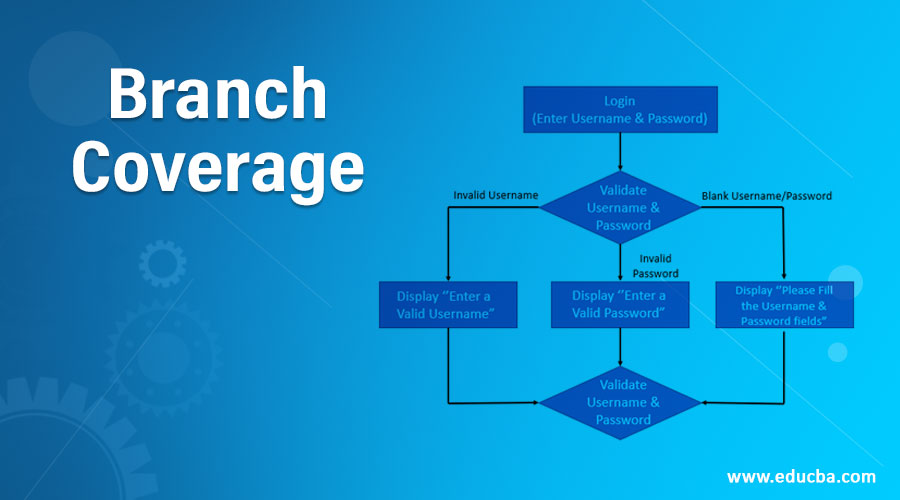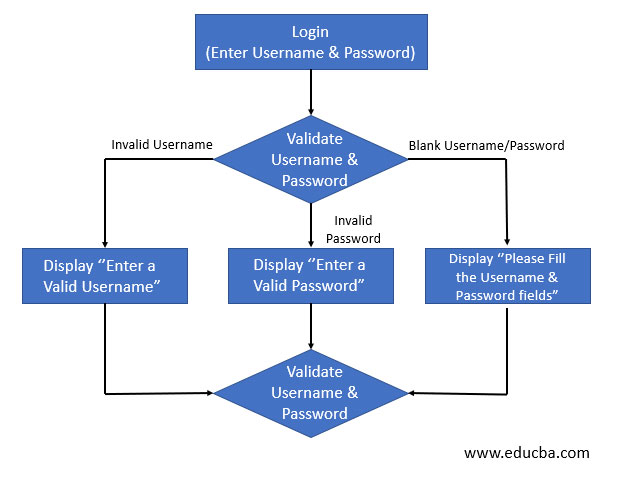Updated April 5, 2023
Introduction to Branch Coverage
Branch Coverage is a well-known testing technique that is designed for identifying every possible and logical branch in the functional flow of the software application and defining the possible results from each resolution. The process goes on by executing every branch at least once, where the term ‘branch’ can be defined as a point that gives two possible results and the term ‘coverage’ can be defined as to what extent the branch execution is accessible. It can otherwise be explained as a necessity for validating the program’s ability to reach every nook and corner, in order to make certain that the functionality provided by the client is fulfilled.
How Branch Coverage Testing is Performed?
- Branch Coverage Testing is performed on each and every part of the code, where branching occurs. For instance, the conditional statements and the loop statements in the program, which gives more than one possible result when executed. Hence the identification of branches is the first step in the implementation of Branch Coverage Testing.
- The next step is to make a list of the results or outcomes of each branch in the code. A branch can possibly have two or three outcomes when the branch is found to be an ‘if’ conditional, and more than that if the branch if found to be a ‘switch case’ conditional statement. And so, it is essential to not miss any potential branch or the branch’s result in this process.
- As a part of Branch Coverage Testing, the final step is to validate the test execution on all the branches and fetch the results. These results should match the ‘expected results’ column in the test script documentation that was created for the Branch Coverage Testing process. If there is any discrepancy found, it simply means that functionality is defected and needs to be recoded to match the requirement created by the client or the Business Analyst.
- This course of quality assurance is a vital part of the code validation, as these test cases not only cover the happy path it also covers the negative functional flow of the software application. Otherwise, the system will not know how to respond during the unexpected negative functionality. For example, in a login page of an application, the user will enter the login id and respective password. In cases like an incorrect or blank username along with a password, the application needs to tell the user what went wrong and ask them to correct the error that they made. Hence the code needs to include the conditional statement for such failure scenarios. Branch Coverage testing is an important activity to ensure these gaps are satisfied appropriately.
How to Calculate Branch Coverage?
In order to locate the branching in the program, the control flow should be pinpointed and all the flow with more than one path needs to be identified. The purpose of this type of coverage testing is to verify every decision tree in the program is faultless and is validated at least once before executing the software application in real-time.
Example
Let us consider the below example for the execution of the Branch Coverage Testing process.
In this example, the login page validation has three possible outcomes. When the login credentials are validated for the correctness, there rise three possible functional flows. If the User fails to enter a valid username, then the first conditional loop will be executed, if the user fails to enter a valid password, the second flow will be executed and if both the credential fields are not passed with any values, the third condition will be carried out.
As these are the failure scenarios, the loop goes on execution again and again, until the success path is reached. In terms of a sample Pseudocode, the above can be achieved by the below snippet,
Code:
READ Username
READ Password
IF Count (Username) < 8
PRINT “Enter a Valid Username”
ENDIF
IF Count (Password) < 5
PRINT “Enter a Valid Password”
ENDIF
IF Count(Username & Password) < 1
PRINT “Please Fill the Username & Password Fields”
ENDIF
ELSE
PRINT “Login Successfully”
The below formula can be used for the same,
Here,
Branch Coverage (%) = 3/3 * 100, which results in 100% coverage.
Explanation: The main purpose of the Branch Coverage Testing is to make sure every functional test scenario has the ability to cover all the potential branching for functional looping statements. The calculation of this coverage is based on two values, namely, the total number of conditional loops defined in the module as a part of the functional requirement and the number of conditional statements that are provisioned to execute in the software application.
Advantages and Disadvantages of Branch Coverage Testing
Below are some of the advantages as a part of the test execution process,
- This testing aids in keeping a check on the possible branches in the program
- It is used to make sure that all the branches in the code are directed to the essential functional requirements mentioned in the application requirement specification provided by the client or the business stakeholders.
- Lets the testing professionals assign the unassigned test cases, which were missed in other testing techniques in the software testing process.
Below are some of the disadvantages of executing on an application,
- This testing method is applicable only to operations other than the Boolean operations, for which the outcome will either be true or false.
- It is not a competent method, in comparison to other coverage testing methods such as statement coverage and code coverage.
Conclusion
Branch Coverage process is an indispensable test coverage technique that allows the programmer and the tester to get better visibility on what is expected and what is achieved so far. It gives a clear view of the progress made in software application development. It is also called as ‘Decision Coverage’ method, as it involves the decision statements of the code.
Recommended Articles
This is a guide to Branch Coverage. Here we discuss an introduction to Branch Coverage along with how calculate and perform execution in detail explanation with advantages and disadvantages. You can also go through our other related articles to learn more –




